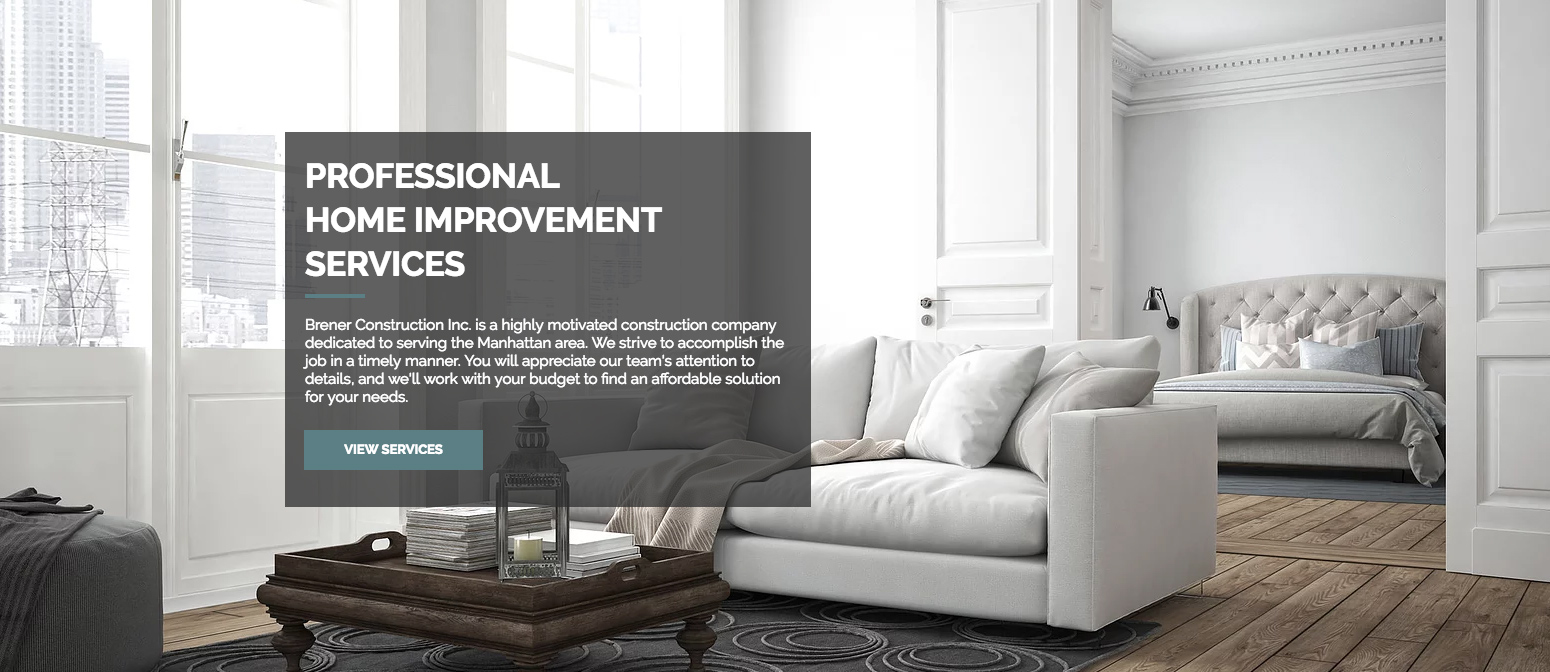Starting A New Home Improvement Project? Let Us Help!
Brener Construction - Most Trusted NYC Contractors
If you’re looking for the best apartment renovation contractors in NYC, contact Brener Construction, Inc. We are a local NY owned construction company with over 20 years of experience in the greater New York City and Tri-State area. We specialize in apartment renovations, kitchen remodels, bathroom updates, and all of your flooring, painting, electrical, plumbing & millwork needs.
Outstanding customer satisfaction is vital to us.
Our team dedicates a great deal of attention to customer service and believe that communication is key in maintaining the best relationship with our clients. We will ensure that you are satisfied from the time we start working until the completion of your project. We keep homeowners in the loop, updating them on work progress, orders, and deliveries. Feedback is encouraged and appreciated, it helps us work better to meet your needs. See our 200+ google reviews here.
We understand the unnerving feelings that renovating your home might come with and that’s why we’re here to offer you peace of mind and reassurance. Call or email us today to discuss your project.
– The Brener Construction Family
See Our Main Site At BrenerConstruction.com
Blog Posts are Below:
Category Archives: Millwork
Examples of Millwork
What is and are some examples of millwork? Millwork refers to any woodwork that is produced inside of a mill. While it sounds simple enough, the woodwork is designed to accommodate the many different requirements of their clients.
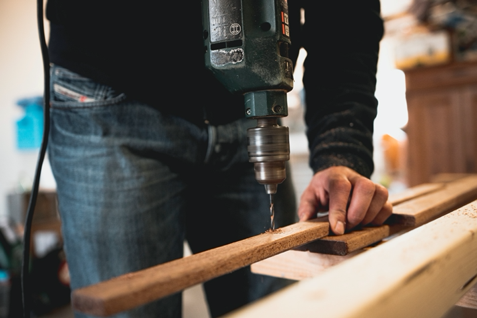
(Source)
Millwork is generally defined as commercially produced woodwork, and most examples of it include finished pieces that don’t need further modifications. Hence, architectural millwork is a vast industry that expands to meet the needs of different clientele.
Examples of Millwork
Different types of millwork provide different aesthetics, and homeowners choose what matches their requirements. Often, homeowners choose woodwork based on how it affects their homes aesthetically.
Here are some creative examples of millwork that people add to their homes for a personalized effect:
Fireplace Frame
Fireplace mantels date back to medieval times when they were used to prevent smoke from invading the room and direct it toward the chimney, effectively removing it from the room. Now, however, they serve a decorative purpose that enhances the fireplace and gives your lounge a homely ambiance. In case you’re trying to maintain a more modern look, there are mantels with flat surfaces. These have fewer lines for a sleek appearance.
Cabinets
Cabinets serve both a functional and aesthetic purpose. They increase the space of your kitchen, helping you keep items organized, and the variety of designs means that you can opt for a style that matches the theme. They are perfect for organizing, categorizing, and personalizing your kitchen and bathroom. Hiring a professional contractor will help you choose the best selection and install it precisely.
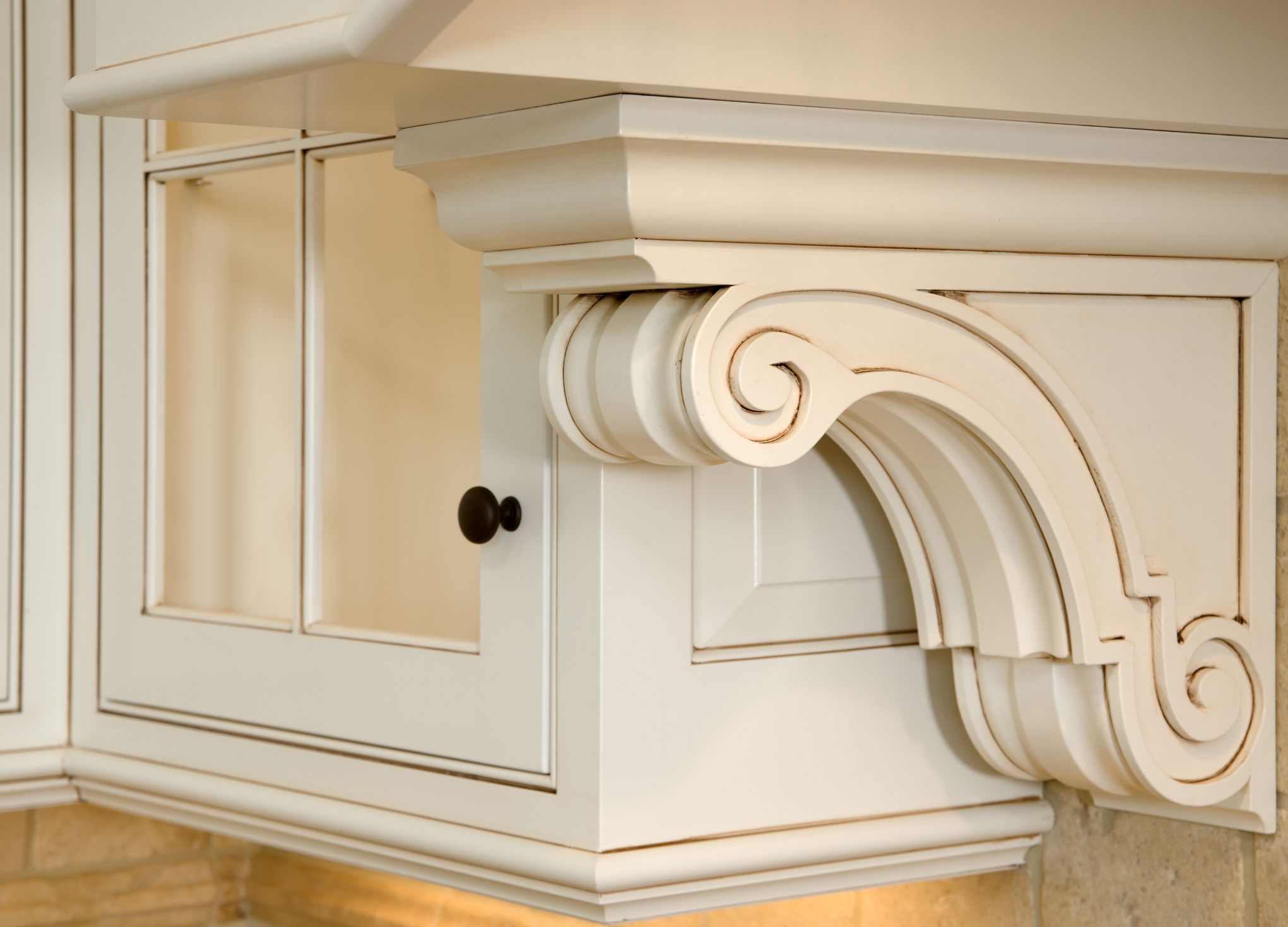
Vanities
Vanities are an excellent addition to your bathroom or your bedroom. In both cases, they offer excellent storage capacity and can become a statement feature because of their looks. Consult your contractor and design it to suit your storage needs, and remember to match it with the rest of the furniture in your room.
Shelves
Shelves are a great way to showcase décor and items that hold sentimental value. You can also use them to store books, family albums, and other heirlooms. In the kitchen, they’re perfect for holding spice jars or stocking food items in the pantry.
Doors
Doors are the standard form of access around a house. Since they determine the accessibility of your home, they need to be sturdy and steady. That means no loose screws or hinges. Moreover, you can choose doors based on the type of wood, stain, and design.
Door Frames
Regardless of the size and width of your doors, you have to choose a framework for them. Their sole purpose is to seal a door in its place. Doorframes are made of solid materials because they deal with outside elements. A poor quality doorframe won’t last very long if you expose it to harsh elements.
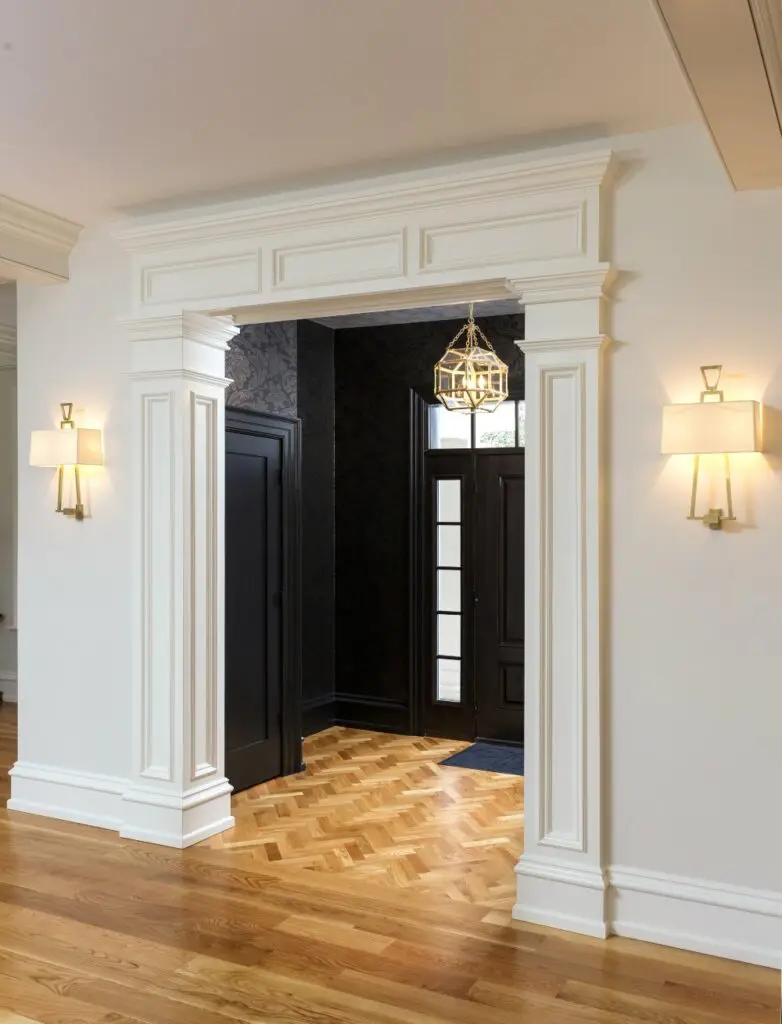
Staircases
You can personalize and develop staircases to meet your requirements. Stair architecture can provide different kinds of visual appeal and vary in size. Some stairs are common in homes, while others are more common in industrial areas. Ideally, you should select a staircase that best fits your needs.
(Source)
Handrails
Handrails, also called banisters, are often located beside a staircase to provide extra stability and support. There are two types of handrails; integrated and wall mounted.
Corbels
These are mostly installed for decoration purposes. However, they also act as a pillar for counters, shelves, etc. They protrude from the wall at a right degree angle. The horizontal part is attached to the supported shelf, while the vertical part is attached wall.
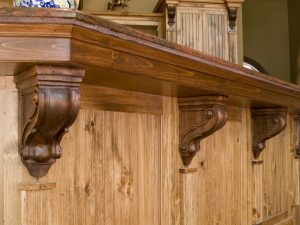
Examples of Millwork: Final Thoughts
Hiring the right contractor to install millwork is essential to renovating your home. If you are looking for a reliable construction firm that will prioritize your needs and work with finesse and professionalism, then look no further. Brener Construction Inc. has you covered.
Contact us today for a detailed consultation.
BRENER CONSTRUCTION INC.
Tel: 646-455-3321
Email: info@brenerconstruction.com
Home Improvement Contracting: What is Millwork?
Who is a home improvement contractor and what is “Millwork”? In-home improvement contracting, they take care of tasks such as labor, construction, resource management, furnishing, and everything else that is part of property remodeling.
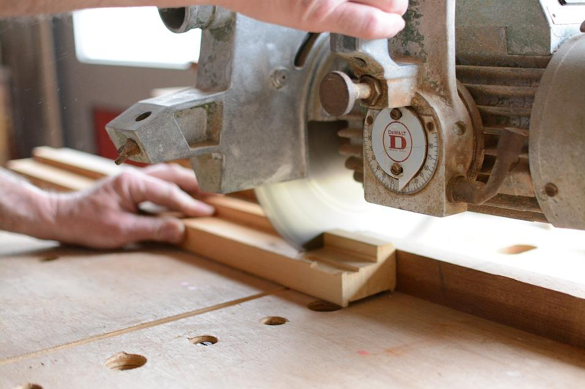
(Source)
However, home improvement contracting (remodeling) means making structure modifications and finishing touches to visually change a property. Although home improvement contracting (remodeling) is a broad spectrum for many different activities, our focus topic in this blog is the concept of millwork and its aspects. So, what is millwork? And what are some common misconceptions surrounding millwork?
What is Millwork?
Millwork is a fabrication or woodwork production that takes place inside a mill. If you have heard the term ‘millwork’ before, you probably have some idea of what it is. From general moldings and trims, flooring, and wall paneling to crown moldings and much more, millwork building materials include them all. Also, do not assume the ceiling and sidings of a house or any other property as part of millwork.
Furthermore, millwork is always custom-made in mills with specific material types like soft or hard lumber. They usually fit in spaces due to customization, while woodwork production sources from various trees such as pine, oak, maple, fir, and poplar. They require detailed and accurate finishing in their production. Why? Because despite their functionality, they are mostly decorative.
Want to know more? Well, even the surrounds in elevators fall under millwork due to the necessity of fitting them into a specific space. Not to mention, the entire cost of millwork is two or three times greater than the cost of materials for production!
Common Misconception- Millwork vs. Casework
As carpentry refers to woodworking, it is safe to assume that millwork and casework are specific categories of woodworking. Although there are similarities between the two, each has distinct features that make them unique.
In reality, casework is typically prefabricated woodwork. Literally, like a box! Yes, it is the same as a cabinet, shelf, cupboard, or simply a case. The prime difference in the woodwork of millwork and casework is the production. While millwork is custom-made in mills, casework is normally ready-made in the form of cabinetry, storage, etc. Want to know why casework is less expensive than millwork? Because it is not custom-made! In fact, casework production utilizes standard measurements. The end products are complete or separate parts (i.e., ready for final assembly).
Types of Millwork
Exterior
- Weathervanes
- Cupolas
- Column Posts
- Outdoor railings
- Pergolas
Interior
- Stairs
- Mantels
- Doors, cabinets
- Railings
What are the Uses of Millwork?
There are only two main reasons why millwork serves as a building material. They are: for aesthetics and function. Essentially, it is critical to know that most of the exterior millwork building materials go through various tests. What are the tests for? It ensures that the millwork products are energy efficient, noise-canceling, and fire-resistant.
On the contrary, interior millwork fabrication serves ornamental, privacy, and sound reduction purposes. At the same time, it creates a classical and traditional aesthetic appeal for old-architecture enthusiasts.
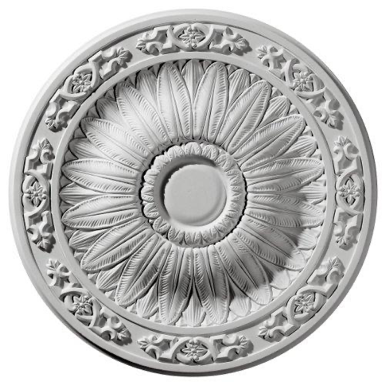
(Source)
Choosing a Home Improvement Contractor for Millwork
After looking at some of the millwork items and learning about the aesthetic appeal that it can give the door, molding on your ceiling, or the railing, you might want to include it in your house remodeling plan. Well, how do you choose a home improvement contractor who can turn your detailed house view plan into a reality? Here are a few things to consider.
A Plan- Getting Started
Consult with an expert, let him or her know your house remodel idea as vividly as possible, and finally, create a cost estimate for the entire remodel plan. Bear in mind that an idea and a plan to make it happen are necessary.
Seek an Experienced Renovator or Remodeling Company
A remodeling company with fantastic experience and expertise in remodeling can ensure impeccable remodeling finishes and quality that exceeds your expectations.
Licensing and Registration
Before hiring a contractor, make sure that he possesses valid licenses and registration for construction and other building activities for the state you reside in.
Home Improvement Contracting and Millwork Conclusion: Consult the Top NYC General Contractors
Brener Construction Inc. aims to ensure customer satisfaction while maintaining luxurious style residential and commercial services. If you live in New York City or have a residence there, you may have to do alot of research when choosing a home improvement contractor for your millwork job. Seeking expertise from an experienced and trusted general contractor is the first step towards making your home remodeling project a reality.
For the best remodeling and home improvement contracting in New York City, contact Brener Construction Inc.
Call us now at 646-455-3321 to meet with an expert. Visit our website to learn about our recent projects. Find our contact page.
All about Millwork
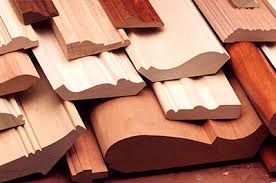 Millwork includes all custom-made woodworks, manufactured in a mill. The finished products are installed commercially or in the houses. Millwork in houses includes items like doors, cabinets, window casings, crown molding, base trims, and wood paneling. In fact, you can safely assume that every space has some form of millwork items. These items are cut, shaped, and created in saw-mills, using raw lumber as a source. Wood flooring is also a type of millwork as most of the wood floorings come from the mill.
Millwork includes all custom-made woodworks, manufactured in a mill. The finished products are installed commercially or in the houses. Millwork in houses includes items like doors, cabinets, window casings, crown molding, base trims, and wood paneling. In fact, you can safely assume that every space has some form of millwork items. These items are cut, shaped, and created in saw-mills, using raw lumber as a source. Wood flooring is also a type of millwork as most of the wood floorings come from the mill.
Wood materials commonly used in millwork are oak, cherry, maple, and pine. However, millwork is not restricted to these types of woods. Millwork comprises various kinds of woods and synthetic materials. Some examples of less commonly used woods include fir, hickory, and poplar.
Millwork vs. Furniture
Not all custom-made wood-work can be considered as millwork. Carpentry is a broad term comprising all types of wood-works. Millwork, casework, and furniture making are all types of carpentry. It is necessary that the millwork is built to fit a certain space like cabinets and trims of rails. The millwork is installed at its designated place and not elsewhere. Furniture, on the other hand, may be custom-built. It is built to withstand transporting and repositioning.
Materials Used in Millwork
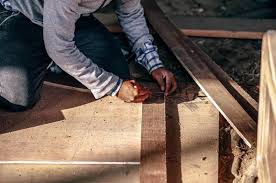 In the past, millwork was referred to as items or goods produced using wood and building materials. The meaning of millwork evolved as time passed. Now, any item made with a mix of wood and synthetic materials is millwork. Some builders and manufacturers do claim that their millwork comprises pure wood and is free from any synthetic materials.
In the past, millwork was referred to as items or goods produced using wood and building materials. The meaning of millwork evolved as time passed. Now, any item made with a mix of wood and synthetic materials is millwork. Some builders and manufacturers do claim that their millwork comprises pure wood and is free from any synthetic materials.
Quality of Millwork
The quality of millwork depends on the raw materials used for its production. Basic and standard millwork can be created using bulk pieces of inferior wood. The care and finishing provided to the millwork is another factor determining its quality. Manufacturers or craftsmen who are skilled and more experienced will produce a better quality of millwork.
Trims
Millwork is commonly used in various trims. These trims could be a component of items, such as chair rail, staircase rail, and baseboards. The decorative trims involve grooves, carvings, or even attractive beadwork.
Most of the trims are for decorative purpose, but you can opt for plain trims as well. Trims also include shelves in closet, bookshelves, pantries, or staircases.
Finishing
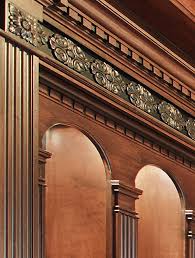 Millwork is typically finished with a sealant, polish, stain, or paint. The finishing depends upon the types of wood and according to your preference as well. Previously, all millwork in homes was finished off in the same color. Now, mixed finishing is trending. You can use two different wood species for your kitchen cabinets and ceilings. You can finish your door trims and window panes with a stain but have painted doors and cabinets.
Millwork is typically finished with a sealant, polish, stain, or paint. The finishing depends upon the types of wood and according to your preference as well. Previously, all millwork in homes was finished off in the same color. Now, mixed finishing is trending. You can use two different wood species for your kitchen cabinets and ceilings. You can finish your door trims and window panes with a stain but have painted doors and cabinets.
Millwork for Your Homes
The proper proportion of wood-work with the right design and trim style is the key to ensuring elegance and sophistication in your home. At Brener Construction Inc, we craft custom interior millwork to your needs and specifications. Our expertise includes architectural wood-works in NYC apartments. We use our artisan skills and techniques to add your style choices to any woodwork.
We have a track record of successful remodeling projects. Contact us for the highest quality of architectural wood-work for your apartment in NYC.
Call today for an estimate:
646-455-3321
How To Maintain Your Custom Millwork
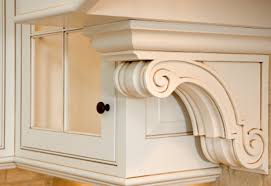 Custom millwork is an excellent way to accent the interior of an apartment, building, or workspace. A variety of millwork accents such as wainscoting and crown molding are particularly famous for forging a new dynamic of a room’s view that is visually appealing.
Custom millwork is an excellent way to accent the interior of an apartment, building, or workspace. A variety of millwork accents such as wainscoting and crown molding are particularly famous for forging a new dynamic of a room’s view that is visually appealing.
While millwork does not require much post-installation maintenance, it does require some care to ensure longevity.
Tips For Caring For Custom Millwork
To ensure the millwork keeps looking its best, it’s important to know how to take care of it. This blog offers tips on how to care for your wood accents.
Clean With Damp Cloth
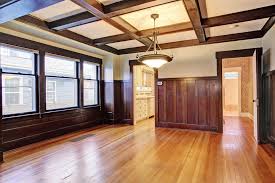 Yes, we are aware of the fact that wood doesn’t mix well with water. It is important to avoid water coming in direct contact with custom millwork as it can lead to the finishing fade over time or worse, damage the wood.
Yes, we are aware of the fact that wood doesn’t mix well with water. It is important to avoid water coming in direct contact with custom millwork as it can lead to the finishing fade over time or worse, damage the wood.
However, cleaning custom millwork is also important. While too much water can adversely affect the wood, you can clean millwork with a damp, clean cloth that has been moistened with water. This is ideal for getting rid of dust, dirt, and other debris that settles on the surface.
Dust Regularly Using An Electrostatic Cloth
Whether it’s your kitchen, bedroom, or the bathroom – you cannot escape the dust. Additionally, dust is naturally attracted to finished surfaces, which means no matter where you install your customized millwork, dust will settle on the surface.
To ensure the finish remains unscratched, regularly dust the millwork with an electrostatic dust cloth. Make sure to be gentle with the dusting, as harsh dusting can scratch the surface.
Humidity
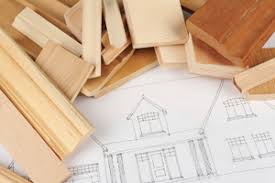 Wood in general, and millwork particularly have a love-hate relationship with humidity. Wood prefers being in harmony when it comes to humidity. If there’s too much humidity, the wood will absorb the water content in the air; which will cause it to swell.
Wood in general, and millwork particularly have a love-hate relationship with humidity. Wood prefers being in harmony when it comes to humidity. If there’s too much humidity, the wood will absorb the water content in the air; which will cause it to swell.
On the other hand, if the humidity level falls below a certain level, wood releases its own water and contracts. This weakens the structure as well as distorts the aesthetic. You can use a humidifier to control indoor humidity. The ideal humidity level is 40-45%, which keeps the wood in ideal shape and structural strength.
How To Ensure Custom Millwork Remains In Ideal Condition
While humidity, dusting, and cleaning are necessary for millwork upkeep, there is a lot more you can do to ensure the custom millwork installed in your kitchen and bathroom outlast a few years.
Here are a few general tips for millwork upkeep:
- Avoid placing your electrical appliances under custom millwork. The heat from appliances can damage the wood.
- To prevent moisture, and subsequently, humidity building up in your bathrooms, make sure to turn on the exhaust fan when using the bathroom, especially when showering
- Ensure your kitchen has a well-placed exhaust fan, and that it is turned on when cooking. An exhaust fan ensures that grease and other sticky, damaging substances in the air are warded off.
Architectural millwork requires expert craftsmanship, such as that possessed by the experienced Brener Construction Inc. From wood trims to custom interior millwork, we provide the highest quality millwork in New York City, customized to your specific needs. Call Brener Construction Inc. today to schedule a free appointment with our millwork experts.

